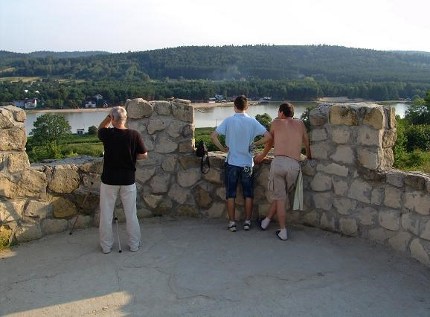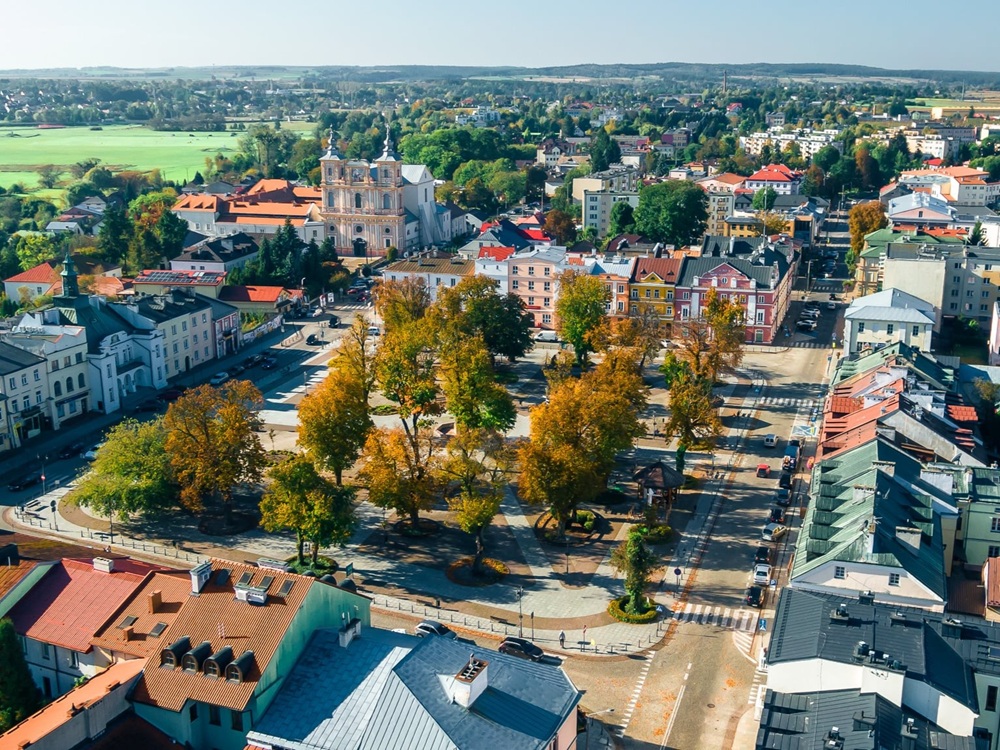Places

One of the oldest towns in the Lublin Region, established in 1377. It is known as the capital of Polish brick (due to a large number of private brickyards) and a raspberry centre of the Lubelskie. Interesting historic sights include former buildings of the Canons Regular of the Lateran with a 15th-century Gothic church, later rebuilt in the Renaissance style and housing the tombs of the Tęczyński Family, a monastery, a 17th-century hospital church, and two synagogues from the 18th and the 19th c. The Regional Museum in Kraśnik boasts a rich collection of historic, archaeological and ethnogr ...

A popular holiday and health resort in the Roztocze located amid beech and fir forests by a reservoir on the Wieprz River. In the Podzamcze District there is a rehabilitation sanatorium housed in the palace and park complex from the 17th – 19th c., formerly owned by the Leszczyński Family. In the Podklasztor District there is a sanctuary of Our Lady with a Dominican Church and a monastery, founded in the years 1690-99 by Queen Marie Casimire Sobieska, a shrine on the spring, chapels, Stations of the Cross and a parish museum. ...

It is situated in the highest part of Central Roztocze (over 350m AMSL) with the highest peak - Wapielnia near Ułów (385m AMSL). About 60 % of the area is covered with pine forests, fir woods, and groves of Carpathian beech and alder. Special protection is given to peat-bogs and rare vegetation of xerothermophilic plants. The most unique woodland areas are protected within St. Roch’s and ‘Zarośle’ nature reserves. ...

Krasnystaw, situated on the Wieprz river, has an interesting history. In the XV and XVI centuries, an important trade route connecting the east and the west led through the town. One of the most valuable monuments of the city is the baroque church of St. Francs Xavier from the turn of the XVII and XVIII centuries. The building of the former Jesuit college next to the temple currently houses the Regional Museum. There is a historic post-Augustinian church and monastery complex nearby. ...

Krężnica Jara położona na południowej granicy Lublina, nieopodal zbiornika Zalewu Zemborzyckiego, zasłynęła przede wszystkim w archeologii. Wieloletnie badania wykazały istnienie na tych terenach dużej społeczności kultury pucharów lejkowatych (3600 – 2600 lat p.n.e.). Ludność neolitycznej osady, której nazwa pochodzi od specyficznej formy naczyń z lejkowato rozchyloną szyjką, wiodła osiadły tryb życia. Hodowla zwierząt i uprawa ziemi były podstawą ich egzystencji. Najcenniejszym znaleziskiem jest gliniana figurka, ukazująca parę wołów sprzęgniętym jarzmem. Jes ...

Near Krasnystaw, in the village of Krupe, there are the ruins of the Renaissance castle of the Orzechowski family, erected in the end of the XVI century. What remains of the once magnificent building are high walls with window openings, supported by buttresses and topped with an attic, partly preserved sgraffito decorations, fragments of bastions, and traces of moats. There is a legend related to the castle about a figure in a robe appearing on foggy evenings. The story goes that the spirit wanders around the castle walls until it finally disappears in them. Allegedly, it is a guardian of ...

A settlement in the Grody Czerwieńskie dating back to the 10th c. situated by the meanders of the Bug River, later the property of the Crown and noble families of the Tęczyński, Ostrorog and Radziejowski, who developed the town and transformed it into a fortress with a busy river port. The last owner of Kryłów was Michał Radziejowski, archbishop of Gniezno, cardinal and the Primate of Poland. The corner walls of the fortified tower and deep underground cellars are the only remains of the old castle. ...

One of the oldest and largest pyramids in Poland is located in the Lublin voivodeship. It is an Arian "tomb" located on a forested hill near the town of Krynica (Krasnystaw county). The building, almost 20 meters high, was probably erected in the XVII century - much earlier than the famous pyramidal tomb in Rapa (Warmian-Masurian voivodeship). ...

Krzczonów to prawdziwa perła Wyniosłości Giełczewskiej. Zasłużeni w boju obywatele Krzczonowa w XVII w. pobili Szwedów, później dzielnie stawiali czoła Turkom pod Chocimiem, odznaczali się też wyjątkową walecznością i hartem ducha w Powstaniu Styczniowym. Uwagę odwiedzających zwraca barokowy wystrój wnętrza kościoła pw. Wniebowzięcia Najświętszej Maryi Panny oraz ludowa kapliczka z figurą św. Jana Nepomucena. Stąd właśnie pochodzi strój ludowy, zwany czasem lubelskim. Jest najbardziej efektownym, okazałym strojem ludowym na Lubelszczyźnie. Z jego reprezentacyj ...

The natural, historic, cultural and tourist assets given special protection in this park include beautiful loessial land relief, natural features of the Giełczewska Height and remains of ancient forests that once covered the Lublin Upland. There are three nature reserves within the park called ‘Chmiel’, ‘Olszanka’ and ‘Las Królewski.’ ...
Page 7 of 16









